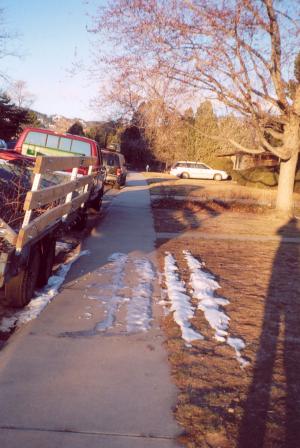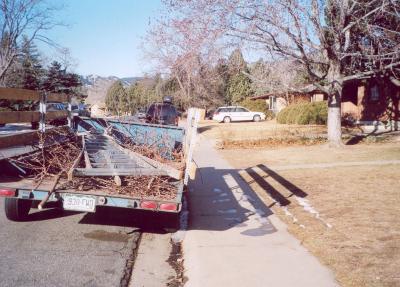We live on the south side of the street; the sidewalk is to the north of our house. We shovel the walks for the woman who lives on the north side of the street. We noticed that we could easily shovel the snow off the sidewalk on the north side; but the snow on the south side became packed and harder to shovel. Also, the next morning, there was a thin layer of very slippery ice on the bare sidewalks on the north side of the street.
Why? Before the snowstorm, when it was still sunny, the sidewalk on the south side of the street was shaded by our house, while the sidewalks on the north side were in the sun. Our hypothesis is that the temperature of the sidewalk on the north side was above freezing during the snowstorm. Hence the heat from the sidewalk melted the snow from the bottom, and the water flowed out onto the sidewalk during the night. Colder air temperatures and lack of sunlight the next morning allowed the sidewalk to cool off enough to freeze the water.
Those of you who have tried the GLOBE Surface Temperature Protocol know that shadows can cool surface temperature. It is not surprising that shadows keep sidewalks from heating up — or that shadows keep snow from melting.
The two pictures illustrate how shadows affect snowmelt. The first picture shows a striped pattern in the snow. The picture was taken in the early morning — you can see my shadow. To the left, there is a trailer with slatted sides. Did their shadows cause the stripes in the snow? The shadow of the slats makes just the right pattern. So, I waited until it was closer to noon, and took the second picture. Sure enough, you can see that the shadows are going to cover the snow strips!


Next time you have a snowstorm, watch how shadows and sunlight affect the snow depth.
